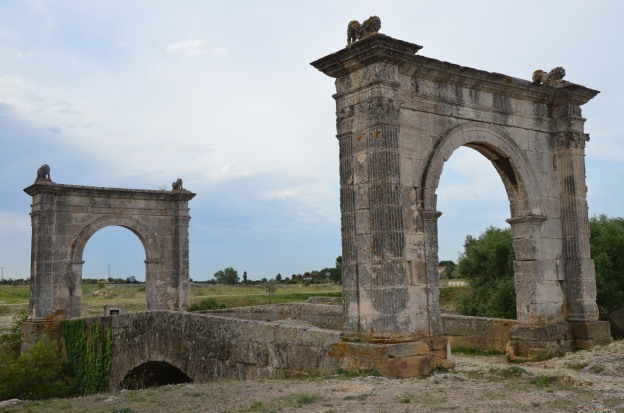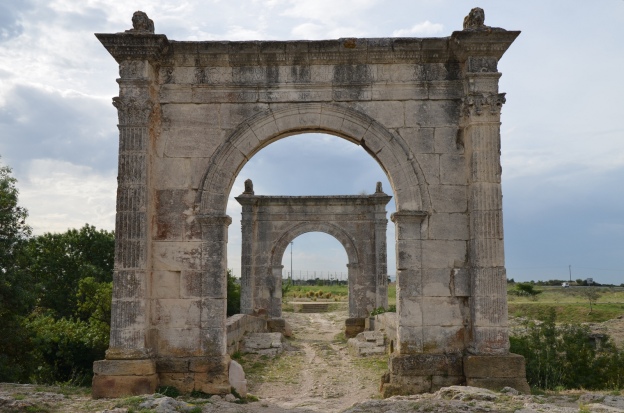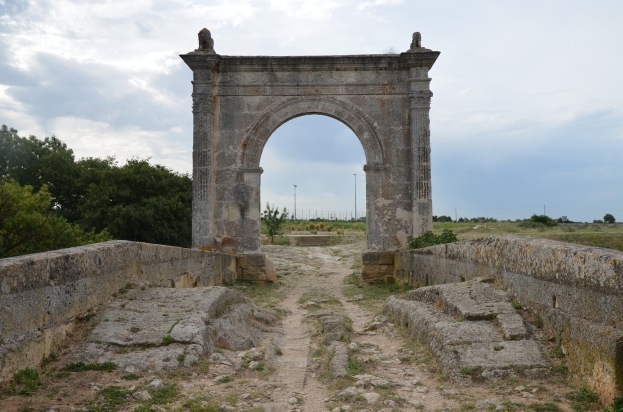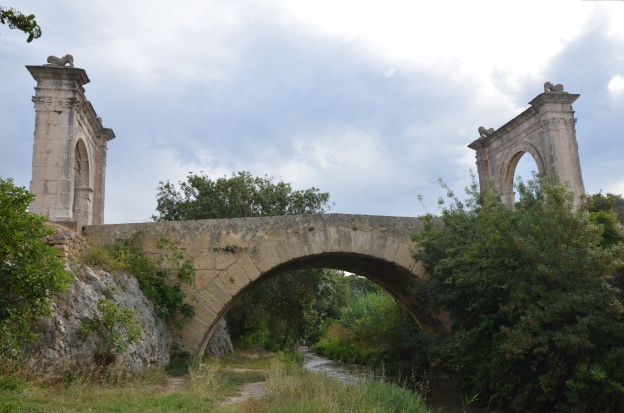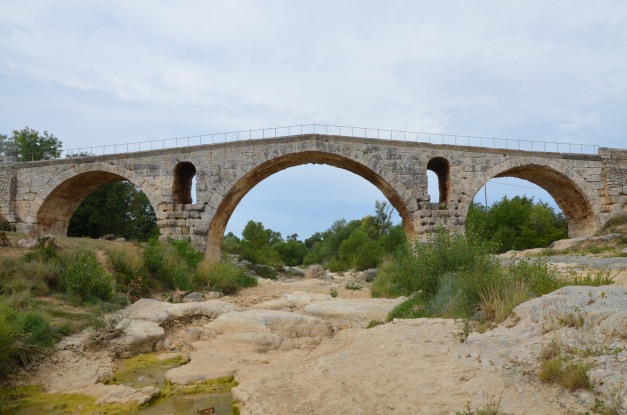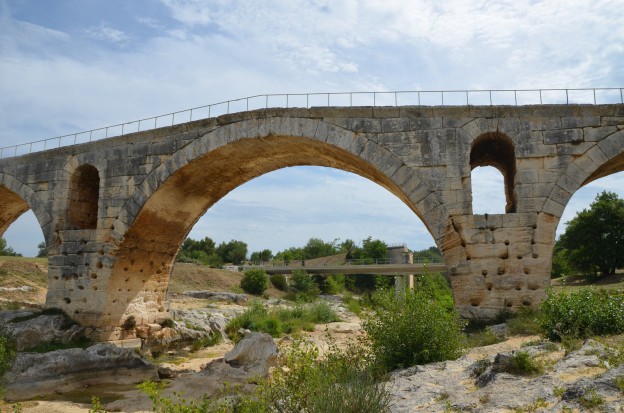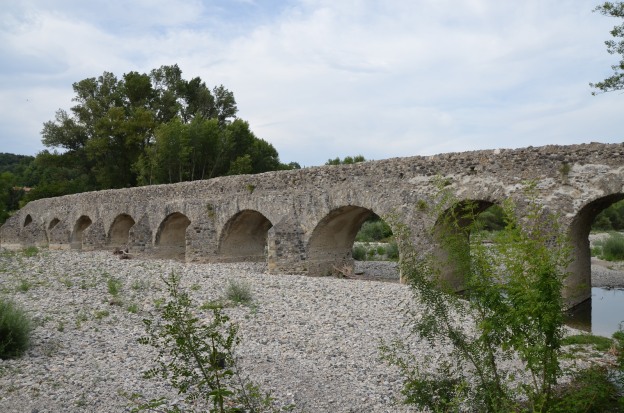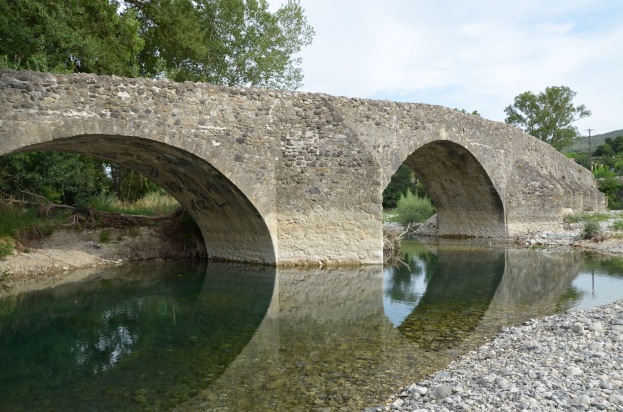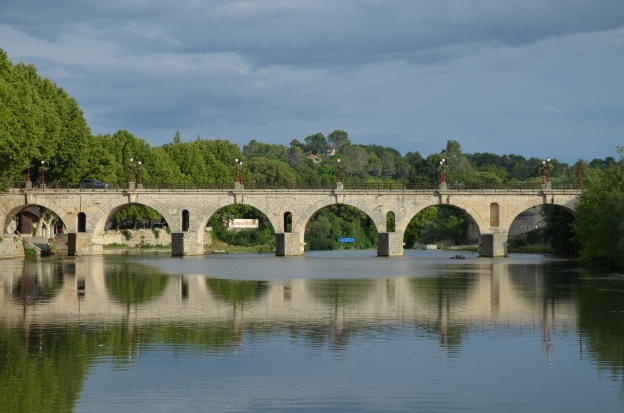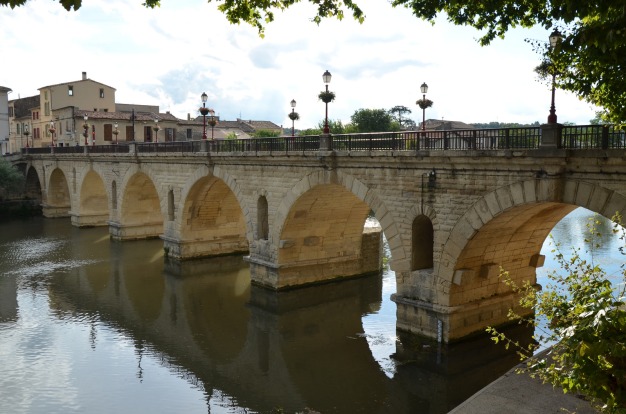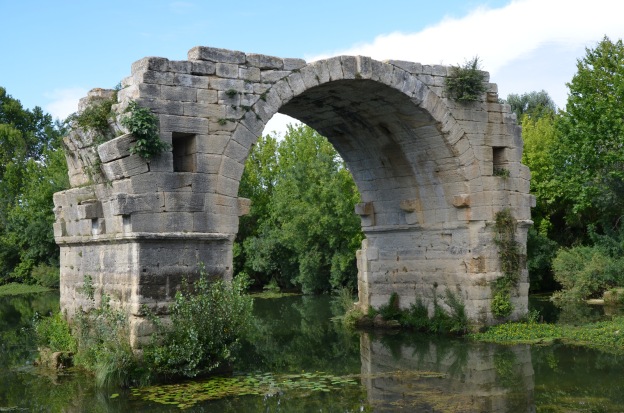“Pontem perpetui mansurum in saecula mundi” (I have built a bridge which will last forever) – Caius Julius Lacer, builder of the Alcántara Bridge
Ancient Roman bridges represent one of the greatest wonders of the ancient world. They are an exceptional feat of Roman construction and I hold a certain fascination for these impressive ancient structures. Naturally, I always look for traces of Roman bridges while travelling. It was in Portugal that I really got excited about these engineering marvels. The country is indeed filled with perfectly preserved Roman bridges (see post here).
Last summer, I travelled to Provence in France and was asked by Ancient History Encyclopedia to write a piece on the 10 must-see ancient sites in Provence. Here I want to talk about the Roman bridges in this southern region of France where many have survived the centuries. Some are still in use today, some 2,000 years after they were built.
The Pont Flavien
The Pont Flavien, with its surviving triumphal arches at each end, is one of the most beautiful surviving Roman bridges outside Italy.
The Pont Flavien stands near the modern town of Saint-Chamas and consists of a single arch spanning the Toulourde River on the Via Julia Augusta. The name “Flavien” refers to a local Roman-Gaul aristocrat called Lucius Donnius Flavius, and an inscription on the bridge itself states that it was built at his instigation. In translation, it means:
-
Lucius Donnius, son of Caius, Flavos, flamen [priest] of Rome and Augustus, has ordained in his will that [this monument] be built under the direction of Cauis Donnius Vena and Caius Attius Rufius.
As the inscription indicates, the bridge was constructed at Flavos’ instigation following his death. It was completed around 12 BCE. The bridge measured 21.4 metres long by 6.2 metres while the arches are at either end each stood 7 metres high.
Following excavations, one can see the remnants of the Roman road with ruts worn by chariots and carts. The bridge was heavily used until fairly recently but it is now reserved for pedestrian use only.
The Pont Flavien has been subjected to repetitive damages. In the 18th century, the western arch collapsed destroying the Roman lions on top of the pediment (the only surviving original lion is on the right-hand side of the eastern arch). Then the same arch was damaged by a German tank during the Second World War and finally collapsed when it was hit by an American truck. It was rebuilt in 1949 and some years later.
The Pont Julien
The Pont Julien, owning its name to the nearby city of Julia Apta (modern-day Apt), whose territory it was built upon, is a beautiful three-arched bridge spanning the Calavon River. Today, it is close to the town of Bonnieux.
It was originally built in 3 BCE on the Via Domitia, an important Roman road that connected Italy and Spain through the Roman province of Gallia Narbonensis. (Gallia Narbonensis encompassed Roussillon, Languedoc, and Provence in southern France). The stone bridge replaced an older bridge built of wood and stone. It was probably destroyed by the torrential waters of the river. Only a few blocks at the base at the based of the piles remain from that period as well as some gashes in the rock.
With its three large arches (16.2 metres for the central arch, one of the biggest preserved from Gaul) its piles with holes and its roadway higher above the water, the new bridge provided a better drainage and a safer passage. The Pont Julien is perfectly preserved and remained in use until a neighboring bridge was built in 2005. However, it is now reserved for pedestrians and cyclists only.
The Pont romain de Viviers
The Pont romain de Viviers crosses the Escoutay River on the right bank of the Rhône near the town of Viviers in Ardèche. It was built in the second or third century CE on the road that linked the ancient city of Vivarium to Alba Helviorum (modern-day Alba-la-Romaine). The city of Viviers takes its name from its Latin name “vivarium”, meaning “fishpond”. This name was given to the Roman town because of the abundance of fish cruising the waterways around it.
With its eleven spans, the Viviers bridge is approximately 108 meters long and 4.50 meters wide. Deeply damaged by severe flooding it has been repeatedly repaired or partly rebuilt. Repairs are attested from the 16th century until the 20th century.
The Pont Tibère
The Pont Tibère (Tiberius Bridge) is a Roman bridge crossing the Vidourle river in Sommières in the Gard department. It was built under the reign of Tiberius on the Via Luteva linking Nemausus (Nîmes) to Tolosa (Toulouse).
It initially consisted of 17 arches, of which only 7 are now visible. It had a total length of 190 meters. During the Middle Ages, numerous arches were absorbed into the city’s structure. Today they serve as cellars.
The Pont Ambroix
The Pont Ambroix or Pont d’Ambrussum was a first century BCE Roman bridge which was part of the Via Domitia. The Ambroix Bridge is unquestionably the most spectacular ruin of Ambrussum, a Gallo-Roman archaeological site which has revealed an exceptional collection of buildings from the Gallic and Roman periods.
The Pont Ambroix is an impressive work of engineering, which allowed the Via Domitia to cross the Vidourle River. It is thought to have had 11 arches and to have been over 175 meters in length. Unfortunately, the ravages of time and the numerous floods took out all but one arch. Two had stood as recently as 81 years ago — which are reflected in Gustave Courbet’s famous 1857 painting of the bridge — but a violent flood in 1933 left only one arch standing.
The Pont romain de Vaison-la-Romaine
One of the best examples of Roman bridge-building skill is still standing to this day in Vaison-la-Romaine. The Roman bridge — built in the first century BCE — spans the Ouvèze River, linking the lower part of the city to the upper medieval part of town. The bridge is unique due to its semicircular 17 meters arch. The bridge has been in continuous use since it was built and has already survived a direct bomb hit in World War II (1939-1945), as well as an attempt by the Germans to blow it up. It has also survived a devastating flood, which caused great damage on September 22, 1992.
Related posts:
10 Must-See Ancient Sites in Provence, France (written for Ancient History Encyclopedia)
Looking for Roman bridges in Lusitania (Portugal)
Source: Following Hadrian
